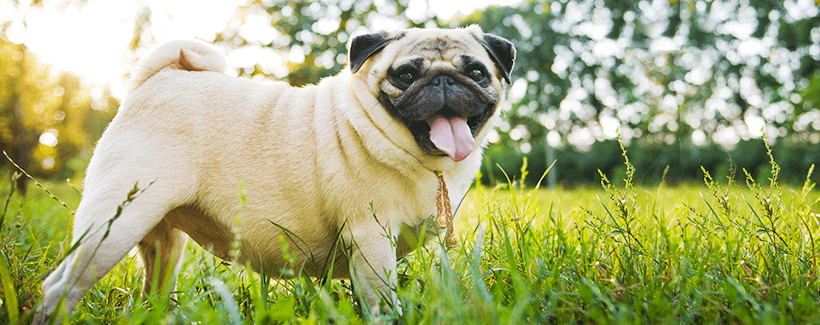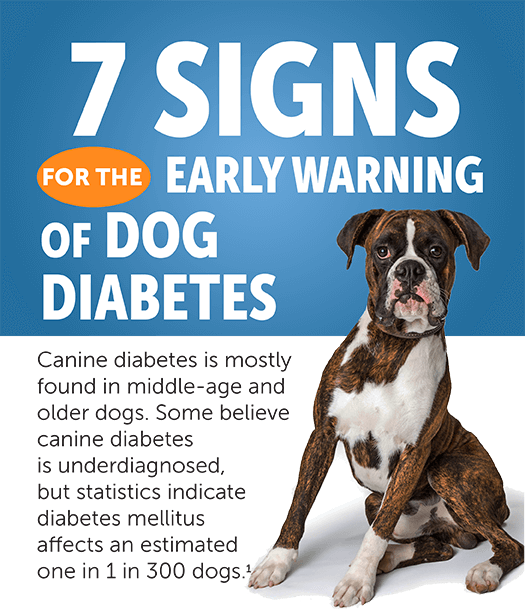
Diabetes in Dogs |Well Pet Post | Lambert Vet Supply
Posted March 25, 2019 in Dog Health


Rx Vetsulin Vetpen Rx Vetsulin VetPen Device 8IU Starter Kit
The first insulin pen designed exclusively for diabetic pets.
ProZinc Rx
ProZinc insulin is a sterile aqueous protamine zinc suspension of recombinant human insulin. ProZinc (protamine zinc recombinant human insulin) is indicated for the reduction of hyperglycemia and hyperglycemia-associated clinical signs in cats with diabetes mellitus.
Modern dogs and humans share one unhealthy characteristic they shouldn’t. Too many of both species are developing diabetes. This increase stems from two key factors-a rise in obesity and a lack of exercise. If your dog has been diagnosed, it is important to remember the disease can be controlled and is not the death sentence it was years ago. Medical science has contributed greatly to diabetic treatment for canines and they are living out their lives fully. For dogs with diabetes, pet owners will need to monitor diet, exercise and medication diligently, but dogs can still live a long and happy life with the disease.
What is Dog Diabetes?
Diabetes is a condition that affects the amount of glucose, or sugar, in your dog’s blood. This can occur when his body produces too little insulin, stops producing it altogether, or does not respond to insulin. Undetected, this can lead to serious health issues like reduced kidney function, eye conditions, comas, and even death, if not monitored and treated. Statistics show a huge jump in diabetic dogs since 1970 with triple the rate being diagnosed with the disease. Some experts believe 1 in every 160 dogs is now diabetic.
Dogs are diagnosed with Type I and Type II diabetes like humans. The whole issue of diabetes centers on the production or lack of production of insulin, the substance that is produced in the pancreas and helps cells use glucose (sugar) for the energy it needs to survive. The digestive system turns food into glucose. Insulin allows the glucose to get into cells. In Type I, the body is unable to produce insulin (insulin-deficiency) so insulin must be provided so glucose can be used. If your dog has been diagnosed with Type I, he will have to be treated for diabetes his entire life.
Type I dog diabetes is more common and certain breeds like Keeshonds, Poodles, certain Terriers, Schnauzers, Samoyeds, Siberian Huskies and more seem to be more predisposed to develop it. Some researchers speculate this connection may have a genetic component. Sometimes pancreatitis (inflammation of the pancreas) is a factor for this outcome. Many veterinarians believe about half of all dog diabetes stems from pancreatic damage from autoimmune disorders and other health problems.
Type II dog diabetes can be called insulin-resistant diabetes. In this case, the pancreas makes insulin, but the body’s cells do not respond to the insulin. The good news is Type II dog diabetes can sometimes be reversed with changes in diet, exercise, and weight loss. Sometimes this means less or no insulin to needed. (Note: To be able to do this is possible, but not very common).
Overweight dogs risk developing diabetes more than those with normal weight. Three additional health issues can contribute to a diagnosis of diabetes-dogs with Cushing’s disease (hyperadrenocortiscism), canines who have had long-term steroid medications, and females. Older dogs also seem more at risk for acquiring diabetes as do dogs that eat high fat diets, and neutered male dogs.
Symptoms of Diabetes in Dogs
In most cases, dog diabetes occurs slowly. It has a range of symptoms that may be signs that something is going on with your dog.
Watch for these symptoms:
- Drinks large amounts of water
- Urinates more frequently and in larger quantities with more accidents in the house
- Eats more often but either loses weight or maintains current weight
- Experiences more urinary tract infections due to excessive sugar in urine (sugar attracts bacteria)
- Glaucoma, a high pressure in the eyes that can cause vision loss
- Rapid on-set blindness from cataracts
The first responder for your dog’s health is you! Be aware of dog diabetes signs.
Your dog is your best friend and his good health is important to you. An informed dog owner can help supply answers for questions your veterinarian may have in regards to dog diabetes symptoms.
This infographic on dog diabetes is a good tool to keep with your dog health records and information.
Infographic: 7 Signs Your Dog Might Have Diabetes
 Click to view full infographic >>
Click to view full infographic >>
How Do You Treat Diabetes in Dogs?
Your veterinarian can help you determine what is the right type of insulin for your dog and the proper dosage. Drug makers produce several kinds including Vetsulin, Lantus, Prozinc, and Glipizide, which work well with different diets and breeds. With advice from a knowledgeable vet, most pet owners can find one that does the best job for their dog in controlling blood sugar levels.
Dogs with Type I diabetes require insulin after every meal. Your veterinarian will work with you to help figure out the specific amount and create an individualized plan for your dog. Fine tuning the exact amount of insulin in regards to food intake and a dog’s weight may take some time to determine, but it can be accomplished. Dogs will need insulin injected under the skin by their pet owners.
Exercise helps stabilize blood sugar in both Type I and Type II diabetic dogs. Diets with high fiber and low carbohydrates also help regulate blood sugar. Regular scheduled feeding and insulin shots also keep blood sugar from spiking. It is important to be consistent in both areas. Ideally, dogs should eat the same amount of food in two meals about 12 hours apart. If your dog has other health issues and is already on a prescription or restricted diet, discuss with your vet what options you have for feeding your diabetic canine. Some dogs may need more protein and carbs to reach the blood sugar levels they need with insulin use.
With proper care, dog diabetes can be managed over several years of a dog’s life. However, changes will occur with age. Your veterinarian will want to keep consistent records on your canine’s blood sugar levels to see his highs and lows. This helps your vet understand how well your dog’s body is responding to insulin and diet. Your vet will be able to show you how to check this and keep records of the numbers.
What to Watch Out For in Diabetic Dogs
Complications can arise with a diabetic dog that will need attention. One is a called hypoglycemia or very low blood sugar. This can occur if too much insulin is injected or it is given too soon for a dog to metabolize food.
Warning signs for hypoglycemia include:
- Inability to get up
- Shaking and restlessness
- Anorexia
- Ataxia (sensory dysfunction that produces loss of coordination to limbs, head, and/or trunk)
- Weakness
- Altered mental state
- Confusion/disoriented
- Vomiting
- Diarrhea
- Bradycardia (a low heart rate)
- Blindness
- Seizures
- Shock
This situation requires intervention from a veterinarian immediately. In serious, cases an untreated low blood sugar will lead to death.
Another medical emergency can include ketoacidosis, when blood sugars are too high and ketones build up dropping the pH in the blood. Warnings for this include:
- Vomiting
- Lethargy
- Sweet-smelling breathe
- Rapid breathing
Ketoacidosis is a life-threatening condition that demands fast attention from a veterinarian.
Dog diabetes can also damage the kidney and liver, leading to further health problems that will need to be addressed.
Your vet will encourage you to have knowledge of these diabetic conditions in advance and to have a plan ready to implement to help bring your dog’s blood sugar down to acceptable levels. Ask your vet for protocols to follow if this should happen.
There is no one size fits all plan for dogs with diabetes, but with some help from you veterinarian your dog can lead a long and prosperous life with you. It just takes some patience and responsibility to get everything on track.



